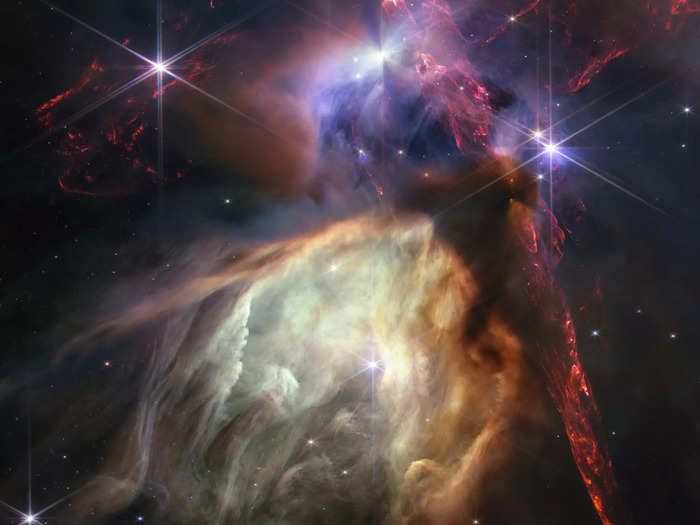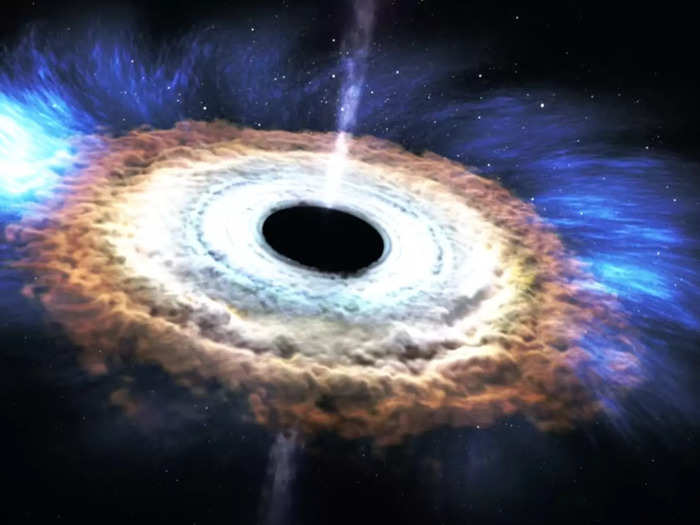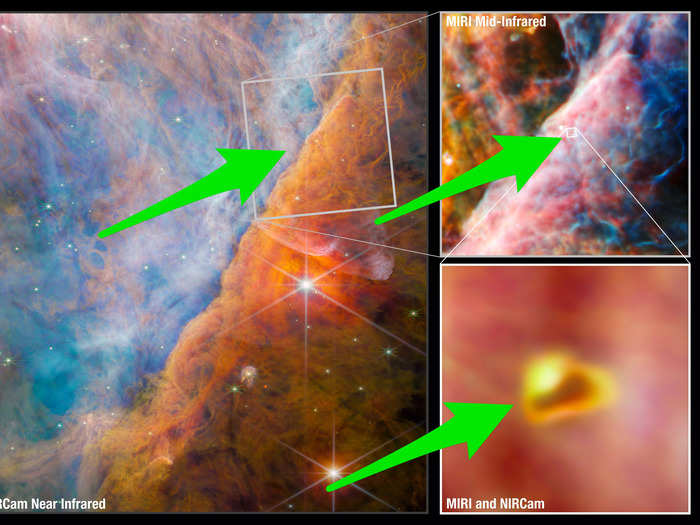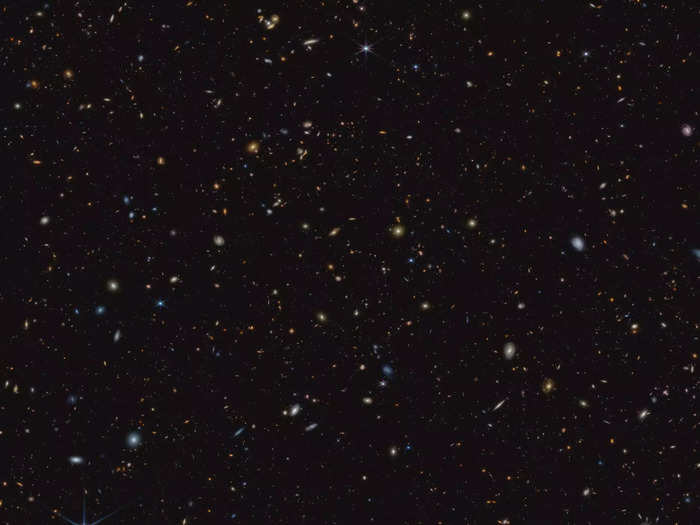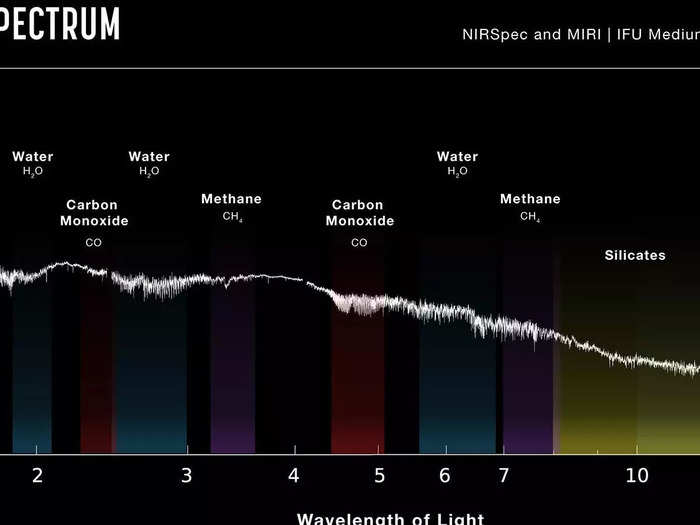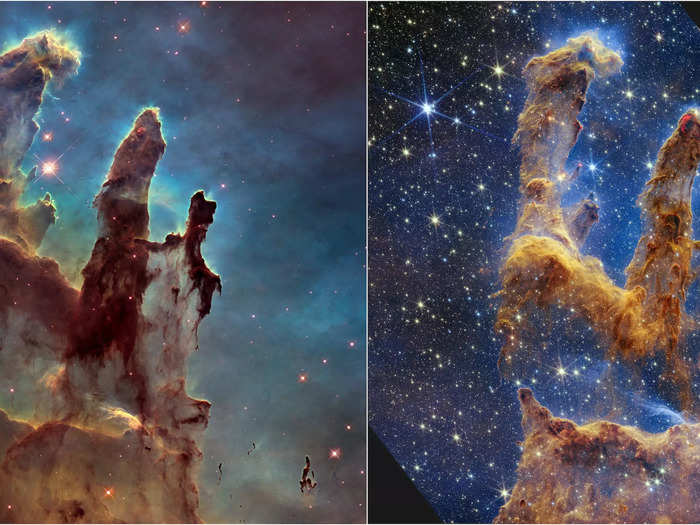An artist's impression of the James Webb Space Telescope.NASA
- The James Webb Space Telescope has been sending us information from outer space for a year.
- We've seen stars forming, atmospheres of distant planets, and galaxy formation in the early universe.
The one-year anniversary of theJames Webb Space Telescope was this week. This feat of engineering, which took over 20 years to complete, has been beaming down new discoveries that continue to floor scientists, Mark Clampin, the Astrophysics Division Director at NASA, said.
"One of the great things about Webb is every time we see a new result we're all just sitting around the monitors going 'Wow.' I mean, it's really an amazing mission for me when I think about the fact that it can just get people you know, completely engaged every time you see a new result. You never get jaded," Clampin said.
To celebrate this technical feat, here are six of the discoveries that we here at Insider have found most exciting.
The birth of 50 distant stars. Some of them are suns powering protoplanetary discs that could one day form a solar system, light years from our own.
An image of stars being formed in the Rho Ophiuchi cloud complex. NASA, ESA, CSA, STScI, Klaus Pontoppidan (STScI)
A supermassive black hole with the mass of 9 million suns that predates any scientists had ever discovered. It's so large and old that scientists grappled with a way to explain it.
An artists rendering of a large black hole and the cosmic dust surrounding it. NASA Goddard
In a distant ring of rock, dust, and gas, scientists discovered a chemical called methyl cation for the first time. It's known as a molecular building block of life, and makes up most of the organic material on our planet.
Images from the James Webb Space Telescope show a part of the Orion Nebula where methyl cation was detected in a young star system, shown in the lower right segment. ESA/Webb, NASA, CSA, M. Zamani (ESA/Webb), PDRs4ALL ERS Team
The discovery of hundreds of new galaxies, many of which are from the very early universe.
James Webb Space Telescope image showing 45,000 galaxies as small splashes of light against the black void of deep space. NASA, ESA, CSA, Brant Robertson (UC Santa Cruz), Ben Johnson (CfA), Sandro Tacchella (Cambridge), Marcia Rieke (University of Arizona), Daniel Eisenstein (CfA)
Sand storms on a planet 235 trillion miles away. Scientists call the countless amounts of little sand particles a "treasure chest" for scientific discovery.
The spectrum Webb found on the planet VHS 1256 b, showing signatures of silicate clouds, water, methane, and carbon monoxide. NASA, ESA, CSA, J. Olmsted (STScI); Science: Brittany Miles (University of Arizona), Sasha Hinkley (University of Exeter), Beth Biller (University of Edinburgh), Andrew Skemer (University of California, Santa Cruz)
A new view of the pillars of creation shows in detail how star-speckled the dusty region is. Hubble had taken photos of this star-forming region before, which makes for an astonishing side-by-side view of scientific progress.
Hubble's 2014 image of the Pillars of Creation (left), versus Webb's 2022 snapshot of the same formation (right). NASA, ESA, CSA, STScI; Joseph DePasquale (STScI), Anton M. Koekemoer (STScI), Alyssa Pagan (STScI)

